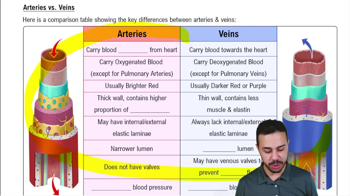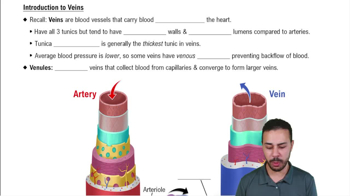Multiple Choice
Which characteristic best applies to the structure of veins?
258
views
 Verified step by step guidance
Verified step by step guidance Verified video answer for a similar problem:
Verified video answer for a similar problem:



 6:24m
6:24mMaster Introduction to Veins with a bite sized video explanation from Bruce Bryan
Start learning